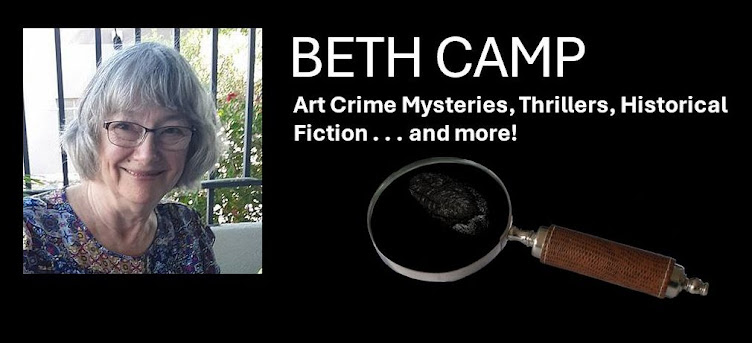 Originally I was going to write about the XY Company, that early fur trading company set up in 1797 to compete with the Montreal-based NorthWest Company.
Originally I was going to write about the XY Company, that early fur trading company set up in 1797 to compete with the Montreal-based NorthWest Company. The Northwest Company labeled its fur packs with NW; the XY Company labeled its fur packs with X and Y, the letters that followed W.
Those were rough and tumble days, and the XY Company did not last long. The fur traders from these two companies built competing posts, schemed, fought, and outbid each other with increasing amounts of rum and brandy. The rivalry out in the field for furs was matched by equally intense battles for profit within these two companies. The end of the short-lived XY Company came in 1804 when it merged with the NorthWest Company, but the newly merged NorthWest Company continued to fiercely compete with the Hudson's Bay Company.
When the Hudson's Bay Company first established York Factory as the hub of its fur trading operations on the edge of Hudson's Bay itself in Upper Manitoba, those early officers and gentlemen with their apprentices and networks of fur traders were content to let the furs come to them for trading and then loading on the annual ship from England. Competition from the NorthWest Company changed that complacency.
This historical summary sounds pretty sedate, compared to the harsh realities of life in the fur trade, well matched by rowdy meetings by the managers to set policy. After the merger, by 1810, the NorthWest Company had nearly 2,000 employees and 1,000 canoes (Morrison 36).
The Beaver Club in Montreal, where 'wintering partners' of the NorthWest Company met to set policy began with 5 toasts. Following each toast, the glasses were hurled into the fireplace. Morrison reports that a bill from one of the hotels shows "thirty-one members and guests consumed twenty-nine bottles of Madeira, nineteen bottles of port, fourteen bottles of porter, and twelve quarts of ale, plus a quantity of gin and brandy" (37). She quotes one attendee as saying, "By four o'clock in the morning . . . we could all give the war whoop as well as Mackenzie and McGillivray . . . " (37).
In 1821, another series of negotiations led the Hudson's Bay Company to merge with the NorthWest Company and acquire its posts west of the Rocky Mountains, significantly expanding its control of fur trading lands. The HBC, concerned about American and Russian expansion in the region, worked hard to solidify its position in the Pacific Northwest.
Perhaps the U.S. would not have stretched "from sea to shining sea" without this intense competition between the NorthWest Company and the Hudson's Bay Company.
 |
| John McLoughlin Source: Wikipedia |
For McLoughlin was the powerful Chief Factor at HBC's Fort Vancouver from 1825 to 1846. He welcomed those American immigrants who arrived nearly broken by the harsh journey west.
The Hudson's Bay Company rebuked McLoughlin again and again for being too generous with food and temporary lodging, but McLoughlin turned no one away. He did encourage them to settle south of the Columbia River, honoring the HBC's assertion that the boundary between the U.S. and Canada should be set at the Columbia River. Those immigrants settled along the Columbia and down into the Willamette Valley, along with retired voyageurs and McLoughlin himself, who later became an American citizen.
 |
| Oregon Country/Columbia District 1818-1846 Source: Wikipdia Click map to see larger version |
Arguments about where the boundary between Canada and the U.S. should be were finally settled not by gun but by diplomacy. The Americans, faced with potentially two wars, one over its northern border, and the other over its annexation of Texas, and its southern border with Mexico, finally drew the line at the 54th parallel, well above the Columbia River the Canadian government wanted as its southern border. Neither country recognized the sovereign rights of tribal peoples beyond a token nod.
Hudson's Bay Company employee Richard Lane, in the very same fur brigade traveling west that included Canadian artist Paul Kane, carried the official boundary papers west in 1847 (Aha! Right in my story, Rivers of Stone). The rest, as they say, is history.
 Tomorrow takes me back to York Factory, nearly the last entry for April's A to Z Blogging Challenge. It's been an amazing month with many new blogs to discover.
Tomorrow takes me back to York Factory, nearly the last entry for April's A to Z Blogging Challenge. It's been an amazing month with many new blogs to discover. Interested in more about John McLoughlin? This is one of my favorite sources, rich with chatty excerpts from letters and journals of the time: Morrison, Dorothy Nafus. Outpost: John McLoughlin and the Far Northwest. Oregon Society Historical Press, 1999, 640 pp.

No comments:
Post a Comment